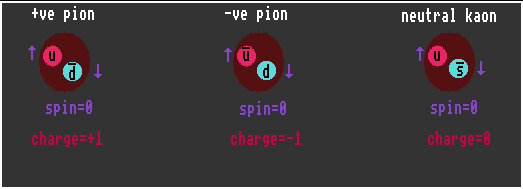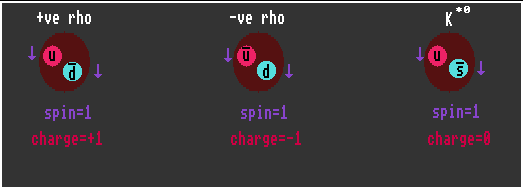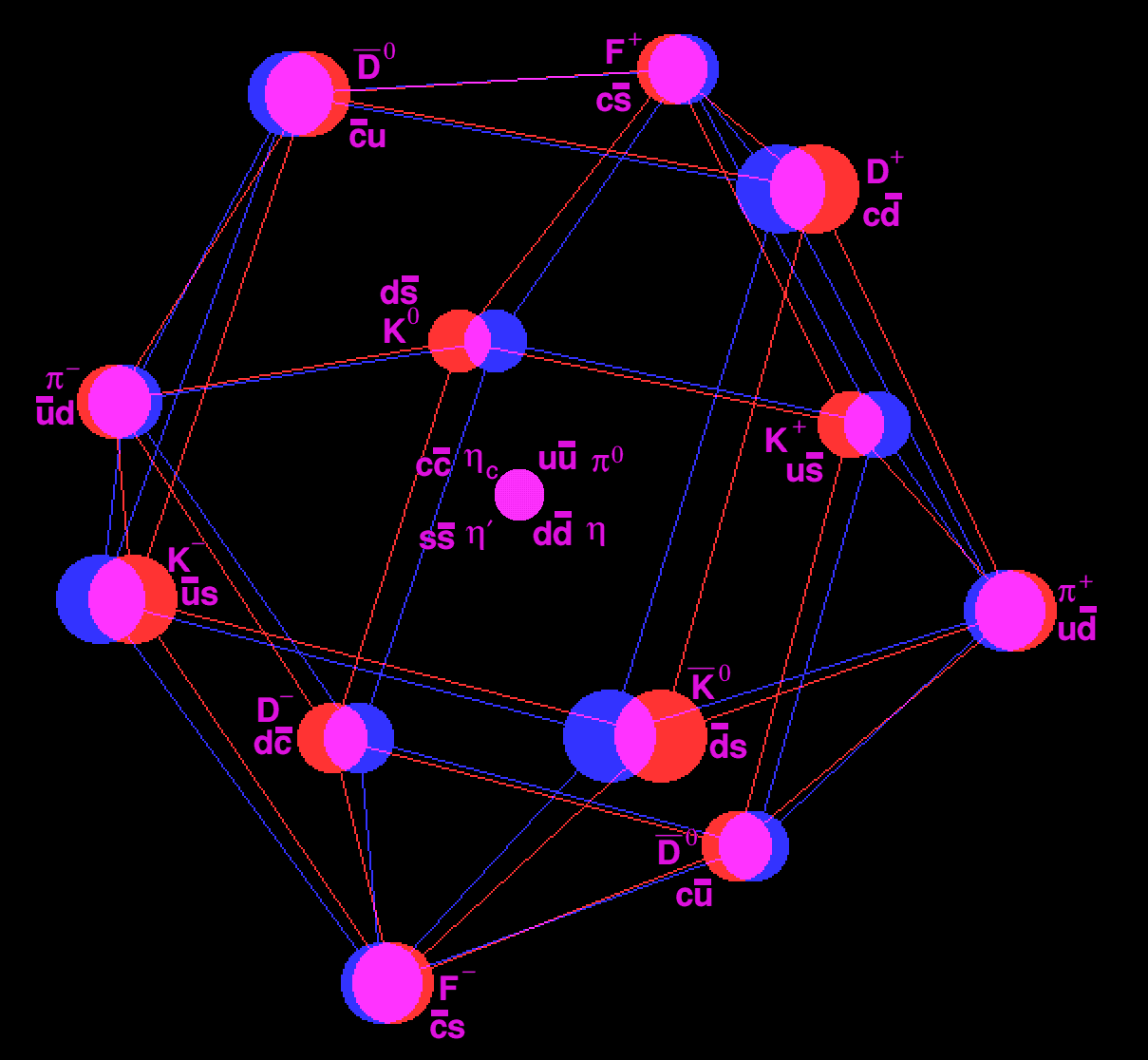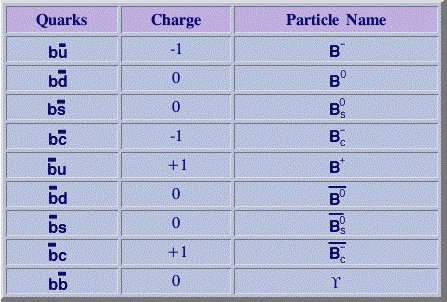

The diagram above shows three typical mesons, the positive pion (up/not down), negative pion (not up/down) and neutral kaon (not up/strange). In each of the above examples, the spins of the quark/anti-quark pair are paired up (i.e. opposite, and thus the two spins cancel to spin-0.
The diagram below shows mesons with the same combinations of quarks, but this time the quark/anti-quark pair have un-paired spins, resulting in a total spin of 1. Note the name changes, these are excited (higher energy) versions of the above mesons.

The electrical charge on a meson must be either zero, or plus (or minus) one, it cannot be fractional.
Mesons usually decay by the strong nuclear force within 10-20 seconds, but there are some which take 1010 times longer to decay via the weak force, by a process analogous to beta decay: the ![]() + meson (up/anti-down meson) decays by the weak force into neutrino and a similarly charged
+ meson (up/anti-down meson) decays by the weak force into neutrino and a similarly charged ![]() + (a heavy positron, 200 times heavier than an positron) in a process analogous to beta decay. The
+ (a heavy positron, 200 times heavier than an positron) in a process analogous to beta decay. The ![]() + then decays into a neutrino/anti-neutrino pair and a positron. A similar process befalls the the oppositely charged pion, which eventually becomes an positron plus a neutrino/anti-neutrino pair. The decay lifetime is about 2.6×10-8 s. Thus the electrical charge, always shown at top right, is conserved in this reaction.
+ then decays into a neutrino/anti-neutrino pair and a positron. A similar process befalls the the oppositely charged pion, which eventually becomes an positron plus a neutrino/anti-neutrino pair. The decay lifetime is about 2.6×10-8 s. Thus the electrical charge, always shown at top right, is conserved in this reaction.

Weak force decay of ![]() + meson (slow)
+ meson (slow)

Strong force decay of ![]() 0 meson (quick)
0 meson (quick)
![]()

N.B. Other than to show the relationship of the spin-0 mesons in the SU(4) symmetry group, a cubo-octahedron, this structure has no existence. A similar diagram can be made for the spin-1 mesons, but I haven't found all their names yet... The lifetime of spin-1 mesons will, in general, be much less that for spin-0 mesons.

The B-mesons, containing bottom quarks
Only recently have computing power and analytical method improved sufficiently to calculate the masses of mesons. It took two years and 500 billion calculations to compute the mass of the Bc meson at 6304 ± 22 MeV, which agrees with the measured value of 6287 ± 5 MeV.
Researchers have found a difference in the decay rate of B-mesons and the anti-B-meson, thus hinting, in some rare cases, at a slight difference between matter and anti-matter.
![]()
![]()